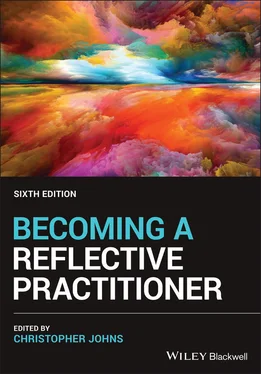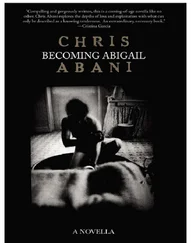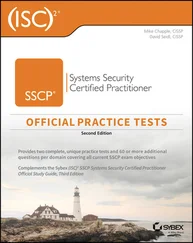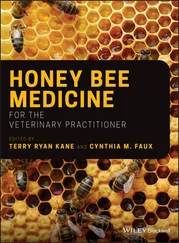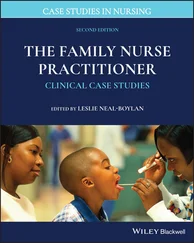Becoming a Reflective Practitioner
Здесь есть возможность читать онлайн «Becoming a Reflective Practitioner» — ознакомительный отрывок электронной книги совершенно бесплатно, а после прочтения отрывка купить полную версию. В некоторых случаях можно слушать аудио, скачать через торрент в формате fb2 и присутствует краткое содержание. Жанр: unrecognised, на английском языке. Описание произведения, (предисловие) а так же отзывы посетителей доступны на портале библиотеки ЛибКат.
- Название:Becoming a Reflective Practitioner
- Автор:
- Жанр:
- Год:неизвестен
- ISBN:нет данных
- Рейтинг книги:5 / 5. Голосов: 1
-
Избранное:Добавить в избранное
- Отзывы:
-
Ваша оценка:
- 100
- 1
- 2
- 3
- 4
- 5
Becoming a Reflective Practitioner: краткое содержание, описание и аннотация
Предлагаем к чтению аннотацию, описание, краткое содержание или предисловие (зависит от того, что написал сам автор книги «Becoming a Reflective Practitioner»). Если вы не нашли необходимую информацию о книге — напишите в комментариях, мы постараемся отыскать её.
Becoming a Reflective Practitioner
Becoming a Reflective Practitioner
Becoming a Reflective Practitioner — читать онлайн ознакомительный отрывок
Ниже представлен текст книги, разбитый по страницам. Система сохранения места последней прочитанной страницы, позволяет с удобством читать онлайн бесплатно книгу «Becoming a Reflective Practitioner», без необходимости каждый раз заново искать на чём Вы остановились. Поставьте закладку, и сможете в любой момент перейти на страницу, на которой закончили чтение.
Интервал:
Закладка:
Table of Contents
1 Cover
2 Title Page
3 Copyright Page
4 Preface Chapters Part 1 Part 2 References
5 CHAPTER 1: Envisaging Reflective Practice Professional Artistry Reflection A Brief View of Reflective Theories Boyd and Fales (1983) Boud et al. (1985) Gibbs (1988) Mezirow (1981) Balancing the Winds Spectrum of Reflective Practices Reflection‐on‐experience Reflection‐in‐action The Internal Supervisor Reflection‐within‐the‐moment Christopher Johns Conception of Reflective Practice Creative Tension Vision Mandy Reflects on Having a Vision for Practice Barriers Tradition Authority and Power Embodiment Empowerment Finding Voice The Silent Voice The Received Voice The Subjective Voice The Procedural Voice The Constructed Voice Transformation and Reflexivity An Encouraging Note Summary References
6 CHAPTER 2: The Six Dialogical Movements The Hermeneutic Spiral Dialogue Six Rules of Dialogue Developing the Reflective Attitude Commitment Curiosity Intelligence Bringing the Mind Home References
7 CHAPTER 3: Writing Self; the First Dialogical Movement Keeping a Reflective Journal Journal Entry 1 Journal Entry 2 Triggers Tapping the Tacit Being Creative The Value and Therapeutic Benefit of Writing Summary References
8 CHAPTER 4: Engaging the Reflective Spiral The Model for Structured Reflection The Reflective Cues What is Significant to Reflect On? Why Did I Respond as I Did? Did I Respond in Tune With My Vision? Did I Respond Effectively in Terms of Consequences? Did My Feelings and Attitudes Influence Me? Did Past Experiences Influence Me? Did I Respond Ethically for the Best? Autonomy Benevolence and Non‐malevolence Utilitarianism Confidentiality The Ethical Demand (Justice, Equality, and Cultural Safety) Different Perspectives Ethical Mapping Anticipatory Reflection Am I Able to Respond as Envisaged? Am I Skilful and Knowledgeable Enough to Respond Differently? Do I Have the Right Attitude? Am I Powerful Enough to Respond Differently? Am I Poised Enough to Respond Differently? How Do I Now Feel About the Situation? Summary References
9 CHAPTER 5: Framing Insights Introduction Single Lines Framing Insights Carper’s Fundamental Ways of Knowing (1978) The Framing Perspectives Philosophical Framing Aesthetic Framing Ethical Framing Reality Perspective Framing Role Framing Theoretical Framing Reflexive Framing Parallel Process Framing Developmental Framing Being Available Template Summary References
10 CHAPTER 6: Deepening Insights: Third Dialogical Movement Theoretical Mapping Guiding Reflection: The Fourth Dialogical Movement Why Guidance is Beneficial Co‐creation of Insights Revealing Woozles Planting Seeds Dialogue Guidance Attitude Balance of Challenge and Support The Challenge/Support Grid Journal Entry 1 Journal Entry 2 Finding Voice (revisited) Facing the Reality Wall Picking Up Issues Opening Up the Guidance Space Inputting and Exploring Theory Finding Your Own Way Journal Entry 3 Journal Entry – Realising Our Power Parallel Process Framing Role Play Game Playing Contracting What Issues Need to be Contracted? Summary References
11 CHAPTER 7: Weaving and Performing Narrative: Introduction Weaving ‘Life Begins at 40’ Introduction Life Begins at 40 Deepening Insight Trigger Transitional Moments Show or Tell? Narrative Form Giving Voice to Others Coherence Summary References
12 CHAPTER 8: Applying the MSR Bringing the Mind Home Writing Self What is Significant to Reflect On? Why Did I Respond as I Did? Did I Respond Effectively in Terms of Consequences? Did My Feelings Influence Me? Did Past Experiences Influence Me? Did I Respond Ethically for the Best? Did I Respond in Tune with My Vision? Given a Similar Situation, How Could I Respond More Effectively, for the Best and in Tune with My Vision? What Would Be the Consequences of Alternative Actions for the Patient, Others and Myself? Am I Able to Respond as Envisaged? Am I Skilful and Knowledgeable Enough to Respond Differently? Am I Powerful Enough to Respond Differently? Do I Have the Right Attitude? Am I Poised Enough to Respond Differently? What Tentative Insights Do I Draw? How Has Extant Theory/Ideas Inform and Deepen My Insights? (Dialogical Level 3) How has Guidance Deepen My Insights? [Dialogical Movement 4] What Insights Do I Draw from This Experience? ‘How Do I Now Feel About the Situation’? References
13 CHAPTER 9: ‘Reflections on Not Giving a Therapy’: Reflections on Not Giving a Therapy Alfie Boundary Naomi Dora Franke Mrs Wells Belinda George Keeler Frank Seymour Bernard Barker Rita Pike Summary References
14 CHAPTER 10: The Sixth Dialogical Movement: Narrative Performance Introduction to the Performance Narrative ‘Passing People By’ Activity References
15 CHAPTER 11: Performance Narrativeas Play: Introduction to Musical Chairs 1 Performing Musical Chairs Audience Response References
16 CHAPTER 12: ‘People are Not Numbers to Crunch’: Introduction People are Not Numbers to Crunch People are Not Numbers to Crunch References
17 CHAPTER 13: Narrative Art and Storyboard Narrative Art Workshops Storyboard ‘People are Not Numbers to Crunch’ Storyboard References
18 CHAPTER 14: The Reflective Curriculum Radical Shift Journal Entry 1 Roots Format of the Reflective Curriculum Professional Identity Clinical Practice Clinical Skills Theory Responsibility for Learning Clinical Credibility Potential Constraints to the Reflective Curriculum Summary References
19 CHAPTER 15: Grading Reflective Assignments Journal Entry Reflection on Touch and the Environment Environment Commentary Activity References
20 CHAPTER 16: Guiding First Year NursingStudents Introduction Guiding Reflection with First Year Nursing Students Michelle’s Experience Lucy’s Reflection Summary References
21 CHAPTER 17: Guiding Third Year Nursing Students Introduction Karen’s Experience Next Session Next Session Summary References
22 CHAPTER 18: Guiding Trudy Session 1 Session 2 Session 3 Session 4 Session 5 Session 6 Skill Box Summary References
23 CHAPTER 19: Becoming a Leader: A Little Voice in a Big Arena Introduction A Little Voice in a Big Arena Drawing Insight Commentary References
24 CHAPTER 20: The Learning Organization Exemplified by the Burford NDU Model The Learning Organisation Vision Personal Mastery Mental Models Team Learning Systems Thinking Leadership Reflective Journal Entry The Burford Nursing Development Unit (NDU): Caring in Practice Model Vision for Clinical Practice The Three Cornerstones of a Valid Vision The Nature of Caring The Internal Environment of Practice Social Utility A System of Working with Patients in Tune with the Hospital’s Person‐centred Vision The Nine Reflective Cues Applying the Reflective Cues What Meaning Does This Health Event Have for the Person? How is This Person Feeling? How Do I Feel About This Person? How has This Event Affected Their Usual Life Pattern and Roles? How Can I Help This Person? What is Important for This Person to Make Their Stay in the Hospice Comfortable? What Support Does This Person Have in Life? How Does This Person View the Future? A System to Ensure Effective Communication Narrative Notes Bedside Handover De‐briefing Summary References
25 CHAPTER 21: A System to Enable Practitioners to Live and Ensure Quality Clinical Audit It Works Like This Standards of Care Triggers for Standards What is a Standard of Care? Confidentiality Constructing a Standard of Care Concerned with Communication with Relatives Relatives Feel Informed and Involved in Care The Value of Standards of Care NOTES References
26 CHAPTER 22: A System to Enable Practitioners to Develop Personal Mastery Towards Realising Their Vision of Practice Bumping Heads Susan Writes 3 Commentary Contracting – The Bottom Line Variables of Clinical Supervision/Guided Reflection Who Should the Guide/Supervisor Be? Peer Guidance Voluntary or Mandatory Group versus Individual Supervision Single or Multi‐professional Summary References
Читать дальшеИнтервал:
Закладка:
Похожие книги на «Becoming a Reflective Practitioner»
Представляем Вашему вниманию похожие книги на «Becoming a Reflective Practitioner» списком для выбора. Мы отобрали схожую по названию и смыслу литературу в надежде предоставить читателям больше вариантов отыскать новые, интересные, ещё непрочитанные произведения.
Обсуждение, отзывы о книге «Becoming a Reflective Practitioner» и просто собственные мнения читателей. Оставьте ваши комментарии, напишите, что Вы думаете о произведении, его смысле или главных героях. Укажите что конкретно понравилось, а что нет, и почему Вы так считаете.
